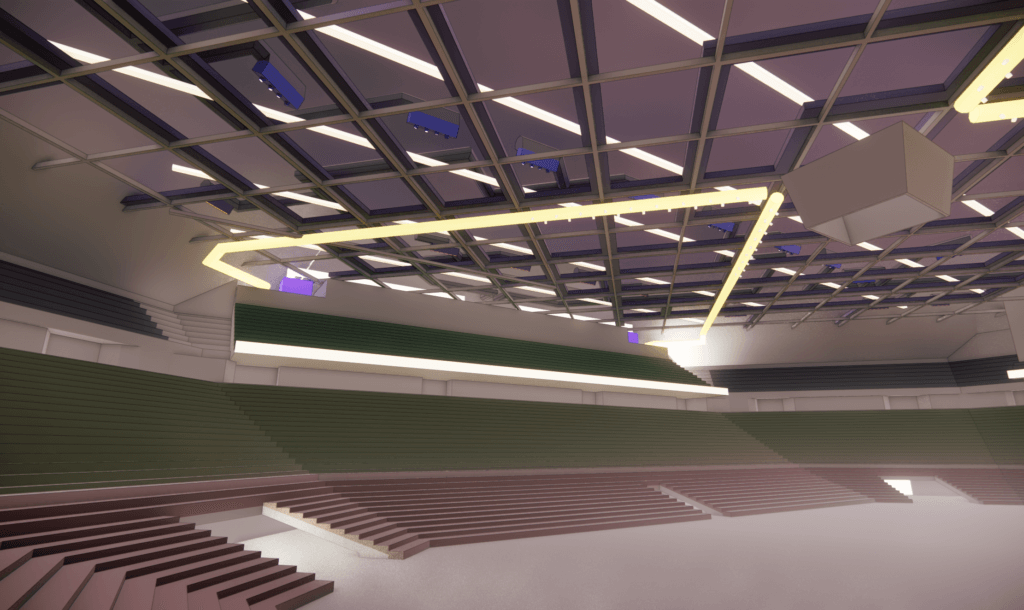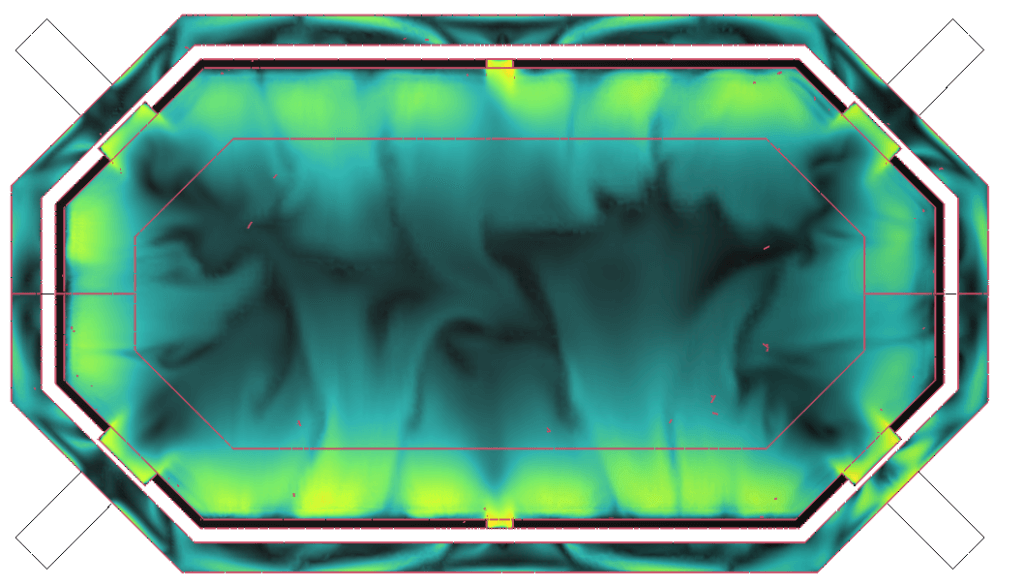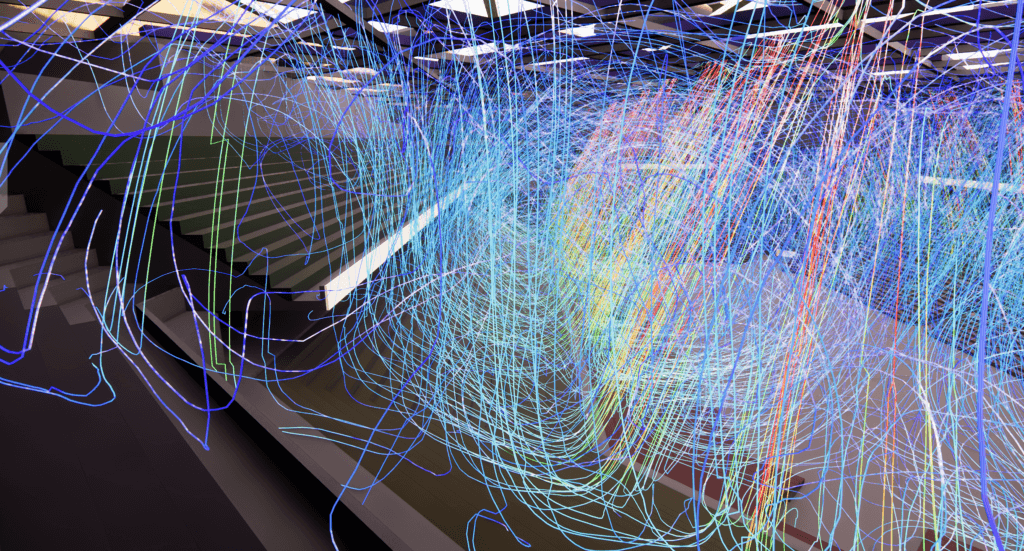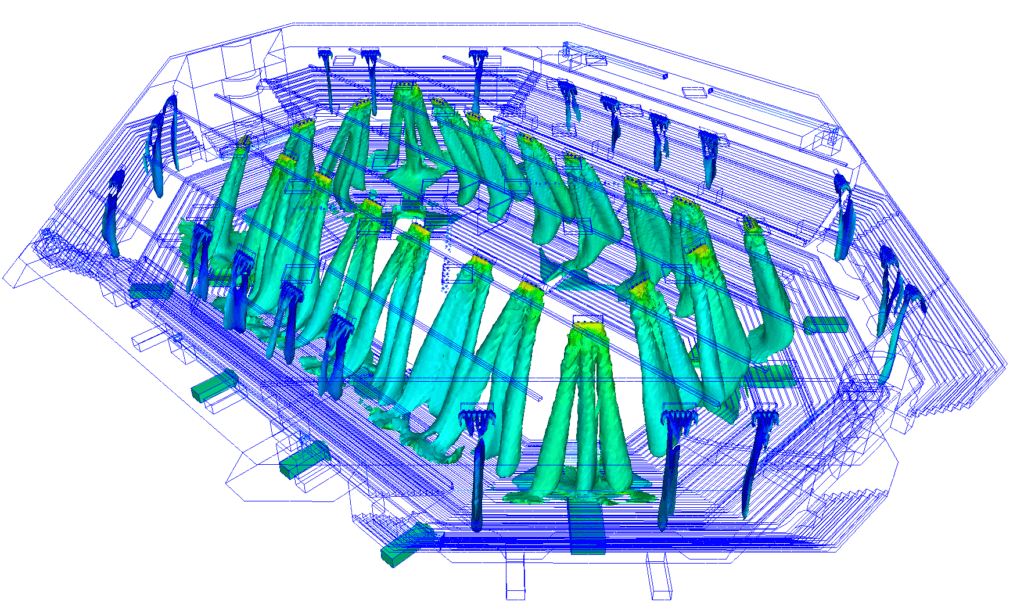Accueil » Climatic engineering » Modeling the microclimate of sports facilities » Palais Omnisports de Paris-Bercy
Palais Omnisports de Paris-Bercy
Feasibility study Palais Omnisports de Paris-Bercy
The in-depth study of EOLIOS made it possible to complete the risk assessment, optimize the design and determine the energy consumption of the data center.
Feasibility study Palais Omnisports de Paris-Bercy
Year
2021
Customer
City of Paris
Location
France - Paris
Typology
Sizing
Continue navigation :
Our other projects :
Latest news :
In-depth analysis to meet the climate requirements of the Olympic Games 2024 at the Accord Hotel Arena
Advanced simulation to guarantee thermal and aeraulic comfort at the Accord Hotel Arena during the 2024 Olympics
The Accord Hotel Arena’s large auditorium is equipped with technical facilities that will ensure extremely demanding indoor summer weather conditions for the 2024 Olympic Games. The existing installations are not able to respond to future climatic conditions. To achieve this, major modifications must be made in order to increase cooling capacity for the large hall . As part of the feasibility study for optimizing air-conditioning systems EOLIOS and SPHERE ingénierie have carried out a series of studies to define system dimensioning .
This involves (among other things) numerical simulation of the dynamic, thermal and aeraulic behavior of the various phenomena taking place in the arena . The studies present the conditions for temperature, air speed, air renewal and mixing in the volumes studied .
Why use CFD engineering?
The main objectives are the sizing of technical rooms and the study of air speeds, thermal comfort, thermal stratification and the study (supply and extraction) of the systems of new mechanical ventilation systems within the framework of JO.
The assumptions relating to the significant and latent contributions linked to occupancy, as well as to the workforce were made according to the configuration of the Great Hall in sports configuration.
The diffusion system represents the terminal and visible part of an HVAC installation. The air diffusion determines the success or not of the installation. Indeed, it influences the occupant’s perception of their comfort and their feeling of hot or cold.
Put simply, pressure differences are the driving forces of air currents. In other words, air flows from a high pressure space to a low pressure space, when these forces are greater than the pressure drops (friction).
How does the aeraulics of large volumes (arena, theater, gymnasium...) work?
In climatic engineering, air circulation is induced by two driving forces:
– Thermal draught occurs when a difference in temperature causes a difference in density between two air masses. This effect is accentuated by a greater height in the volume. “Hot air tends to rise”.
– The distribution of pressures and depressions induced by the HVAC systems in the volume.
Of lesser importance, the ambient humidity also causes air movement, since humid air is lighter than dry air. Therefore, humid air rises due to its lower density (example of the hydrological cycle), even though its temperature is identical to that of dry air.
What is the impact of thermal stratification in high-rise buildings?
The phenomenon of stratification is the consequence of the following physical phenomenon: the density of air depends on its temperature. Specifically, as the temperature of a fluid increases, its density decreases and the fluid rises.
This property allows hot and cold air to be distributed according to height, more pronounced in high volumes and to remain separated in distinct layers (strata: from which the term “stratification” is derived). The layers are separated by the coldest ones at the bottom and progressively go to the warmest air strata above. Generally, the objective is to maintain the warm strata at the level of the extractions in order not to overheat the occupancy zones by the scenic contributions.
How can HVAC systems impact thermal comfort?
The influence of a long-throw nozzle system on temperature homogenization
This organization into layers of different temperatures is true for a volume in which the inside air is stable, that is to say little stirred and with little recirculation. In our case, there are significant recirculation and induction movements taking into account the installation of a blowing system by long range nozzle resulting in a homogenization of the temperatures.
Indeed, the phenomena of induction and recirculation disturb the hot strata of the upper parts. High-speed long-throw ventilation results in significant mixing of the air already present in the volume, so that the ambient temperature is almost uniform throughout the volume. The air in the volume is vigorously stirred, animated by friction and the effects of the depressions and turbulence induced by the long throw lows, which set the air masses in motion.
In the end, the joint studies with Sphère Ingénierie made it possible to carry out a complete technical assessment and the provisional details of the work to be carried out.
Continue on this topic
Video summary of the study
The arena’s thermo aeraulic simulation provides information on airflow, circulation, air quality, heat flows, pressure flows, temperatures and humidity levels. The studies of EOLIOS and SPHERE Ingénierie allowed to dimension precisely the needs of cold production and air distribution within the framework of the renovation of the installations of climatic engineering of the Accord Hôtel Aréna.
Discover other projects
Heating/Cooling system design for a pharmaceutical plant
Aquatic Center – Haut de Seine
Prototype – Natural ventilation chimney
HVAC – Medical equipment warehouse
Sharaan by Jean Nouvel resort
Swimming pool – Montreuil
Thermal comfort study – trichloramine diffusion in a children’s pool
Plant – Wind turbine
Cold Room – Leipzig
Cold room – penetrant testing
Palais Omnisports de Paris-Bercy
Sizing of natural draft extractor hoods







